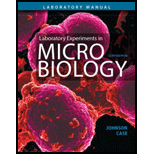
To analyze:
Show ammonification and Desulfuration of cysteine amino acid.
Introduction:
Ammonification is also known as mineralization and this is the opposite of immobilization. In this process, organic nitrogen has been incorporated into proteins and amino acids. this will be broken down into inorganic nitrogen. Like, suppose any animal and plant has died. So dead organic matter from plant and any other living organism which has died. This dead organic matter decomposes by decomposers like bacteria and
Explanation of Solution
The given amino acid is cysteine, whose molecular formula is C7H7NO2S. Ammonification process of cystine is as follows:
The nitrogen cycle is the process in which the recycling of nitrogen takes place by different organisms. Ammonification is one of the processes of the nitrogen cycle, where bacteria convert the organic nitrogen, such as amino acids and
The amino groups on the amino acids are removed by the process of delamination, which results in the production of ammonia. The ammonification process is advantageous to autotrophs that are unable to follow the deamination process. Ammonia gets dissolved in water present in the soil to form ammonium ions, which are then converted to nitrates and nitrites by Nitrobacter and Nitrosomonas.
Desulfuration:
There are some other bacteria, which are involved in another biogeochemical cycle called the sulfur cycle. Desulfuration is a process in the sulfur cycle, where sulfates are reduced by sulfate-reducing bacteria, such as desulfovibrio, to hydrogen sulfide and amino acids that contain sulfur are degraded to produce hydrogen sulfide.
Sulfur-reducing bacteria obtain energy by molecular hydrogen during the process of Desulfuration. They breathe sulfate rather than oxygen. In this way, Desulfuration benefits sulfur-reducing bacteria.
Thus, ammonification where through the dead plant and animals get inorganic nitrogen which is dissolved in water with soil and plants intake ammonium ions easily. Desulfuration is a process in the sulfur cycle, where sulfates are reduced by sulfate-reducing bacteria, such as desulfovibrio, to hydrogen sulfide and amino acids that contain sulfur are degraded to produce hydrogen sulfide.
Want to see more full solutions like this?
Chapter 56 Solutions
Laboratory Experiments in Microbiology (12th Edition) (What's New in Microbiology)
- Which statement among A - D is false? A) O Active transport processes allow a bacterium to maintain an ion gradient B) O Membrane permeant acids and bases can act as growth inhibitory agents towards bacteria. C) O Transport via group translocation results in modification of the incoming solute. D) O Bacteria tend to maintain their interior slightly hypertonic relative to the external environment. E) O None of A-D is false.arrow_forwardWhich of the following statements is a reason why Acid-Fast Bacteria resist the Gram stain a) Because their cell wall architecture varies from both gram-negative and gram-positive bacteria. b) Because they lack the peptidoglycan layer. c) Because they have a thick peptidoglycan layer. d) Because they have a thick layer of fatty acids.arrow_forwardyou grew streak plates of Clostridium sporogenes under both aerobic and anaerobic conditions. Which plates showed bacterial growth, and what does the zone around the metronidazole disc represent? Additionally, explain what types of bacterial growth metronidazole affects and why.arrow_forward
- Why might clinical medicine have an interest in understanding bacterial cell division at the molecular level? Explain why a hyperthermophile would probably not be a human pathogen. Describe four factors that may have an influence on the effectiveness of an antimicrobial treatment. Explain why 70% or 80% alcohol is more effective than 100% alcohol in controlling microorganisms.arrow_forwardClostridium tetani is a common soil bacterium and causes tetanus. Would you expect C. tetani to possess the enzyme catalase? Explain.arrow_forwardPenicillin does not directly kill bacteria. Why do cells usually die in the presence of penicillin? And, therefore, what cells from a given species would penicillin then target and what cells would penicillin not be able to target from that specific species? Think peptidoglycan, what would be more targeted then, gram + or gram – and why?arrow_forward
- Why mightproteorhodopsin make a bacterium such as Pelagibacter morecompetitive in its habitat?arrow_forwardClostridium tetani is a common soil bacterium and causes tetanus. Would you expect tetani to possess the enzyme catalase? Explain. Research on the growth requirements of this bacterium is required.arrow_forwardWhy do low concentrations of alcohol inhibit Gram-negative bacteria more than Gram-positive bacteria? Explain how the alcohol interacts with: 1) Gram-negative cell wall structures 2) Gram-positive cell wall structuresarrow_forward
- Gram-negative bacteria are surrounded by two membrane bilayers separated by a space termed the periplasm. The periplasm is a multipurpose compartment separate from the cytoplasm. The periplasm has a distinct oxidizing environment that allow certain key protein structural features to be formed. Can you identify an amino acid(s) that would be affected by this oxidizing environment? How would it be affected, and what structural features would be sensitive to this environment? Can you discuss the implications of this from a standpoint of recombinant protein expression?arrow_forwardDescribe the events that occur with E. coli in each of the following growth conditions: in a medium containing glucose but not lactose; in a medium containing both sugars; in a medium containing lactose but no glucose; and in a medium containing neither sugararrow_forwardclostridium botulinum is a bacterium usually present in soil that may cause botulism. Briefly explain why one or few cells of a pathogenic bacterium, such as clostridium botulism, by itself typically does not secrete a toxin, despite the species as a whole being characterized as toxin producing.arrow_forward
